If your beverage air refrigerator is not cooling, the problem may be due to a faulty thermostat or a malfunctioning compressor. We will discuss common causes for a refrigerator not cooling and provide troubleshooting tips to help you solve the issue.
Whether you own a commercial or residential beverage air refrigerator, understanding the potential causes and solutions will help you get your refrigerator back up and running in no time. Refrigerators are essential appliances that keep our food and beverages fresh and cool.
However, they can sometimes encounter problems that disrupt their cooling function. If you’re facing the issue of your beverage air refrigerator not cooling, it can be frustrating and inconvenient. Before calling a repair technician, there are a few troubleshooting steps you can take to try to identify and potentially solve the problem yourself.
We will discuss some common causes for beverage air refrigerator not cooling and provide tips on how to troubleshoot the issue. By following these steps, you may be able to get your refrigerator back to its optimal cooling state without having to incur the expense of a professional repair service.
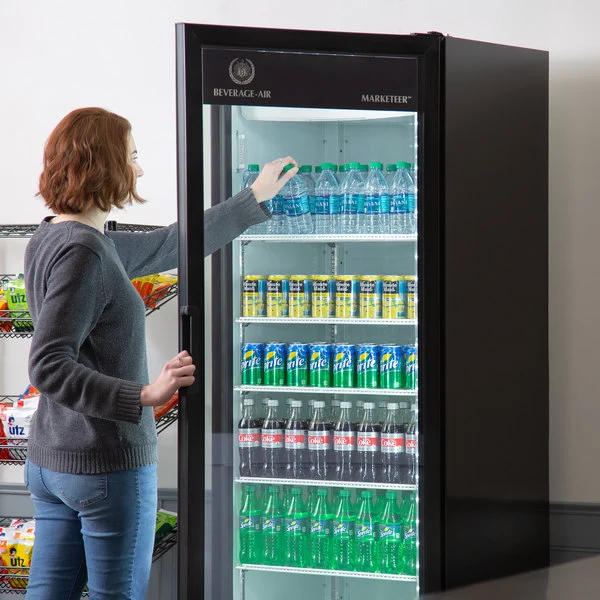
Verifying The Power Source And Outlet Connection
Check if your beverage air refrigerator is not cooling by first verifying the power source and outlet connection. Ensure that the refrigerator is properly plugged in and receiving power to address any potential issues with cooling.
As you open your beverage air refrigerator and realize that it’s not cooling properly, don’t panic just yet. There are several potential causes for this issue, and one of the first things to check is the power source and outlet connection.
By verifying these aspects, you can troubleshoot the problem efficiently and get your refrigerator back to optimal cooling performance.
Let’s delve into the steps to take in order to ensure that the power source and outlet connection are functioning correctly.
Inspecting The Power Cord For Any Damage Or Loose Connections:
- Examine the power cord from the refrigerator for any signs of damage, such as cuts or frayed wires.
- Check if the power cord is securely plugged into the back of the refrigerator.
- Inspect the other end of the power cord to ensure it’s firmly plugged into a power outlet.
- Make sure there are no loose connections or exposed wires at either end of the power cord.
Testing The Outlet With Another Device To Ensure It’S Working Properly:
- Unplug the refrigerator from the current outlet.
- Choose a different device, such as a lamp or phone charger, and plug it into the same outlet.
- Confirm that the alternate device is receiving power and functioning correctly.
- If the alternate device doesn’t work, there might be an issue with the outlet itself, which could require professional help to fix.
By thoroughly inspecting the power cord for any damage or loose connections and testing the outlet with another device, you can determine if the power source and outlet connection are contributing to your beverage air refrigerator not cooling.
Remember to always prioritize safety when dealing with electrical components and consult a professional if needed.
Stay tuned for the next steps in troubleshooting your refrigerator’s cooling issues.
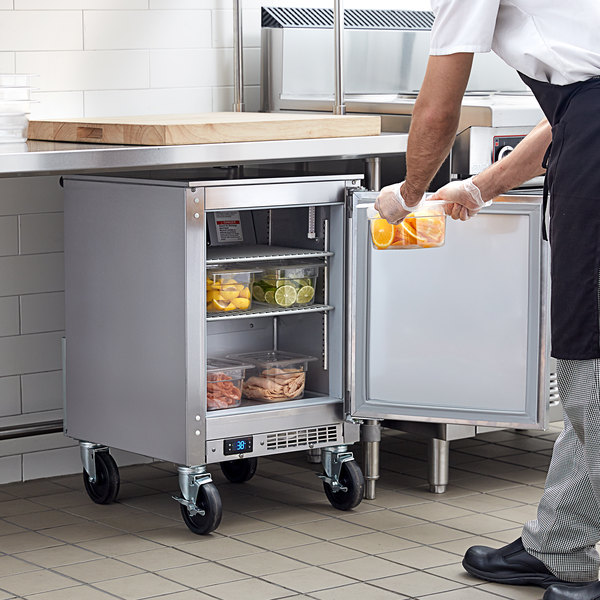
Assessing The Thermostat Settings And Functionality
To troubleshoot a beverage air refrigerator that is not cooling, it is crucial to assess the thermostat settings and verify its functionality. By checking the thermostat settings and ensuring proper functionality, you can identify if this is the cause for the cooling issues.
Assessing The Thermostat Settings And Functionality
Is your beverage air refrigerator not cooling as it should? One possible reason for this issue could be related to the thermostat settings or its functionality. Properly assessing the thermostat and ensuring that it is functioning correctly is crucial in resolving this problem efficiently.
In this section, we will explore two key steps to address this concern: adjusting the temperature settings and resetting the thermostat if it’s malfunctioning.
Adjusting The Temperature Settings To The Appropriate Level:
- Firstly, check the current temperature settings on your beverage air refrigerator.
- Evaluate the recommended settings for your specific model, often provided in the user manual.
- Set the thermostat to the appropriate temperature level by following the manufacturer’s guidelines.
- Ensure that the temperature is not set too low, as this can result in excessive cooling and potential freezing of contents.
Resetting The Thermostat If It’S Malfunctioning:
- If you suspect that the thermostat is malfunctioning, a reset can be attempted to troubleshoot the issue.
- Locate the reset button or control on the thermostat panel. The exact location may vary depending on the model.
- In a soft reset, press and hold the reset button for a few seconds or follow the manufacturer’s instructions for resetting.
- Alternatively, perform a hard reset by completely unplugging the refrigerator from the power source, waiting for a few minutes, and then plugging it back in. This can help refresh the thermostat system.
- Once reset, monitor the refrigerator’s cooling functionality to see if the desired temperature is achieved.
By carefully assessing the thermostat settings and functionality of your beverage air refrigerator, you can troubleshoot cooling issues effectively. Take the time to adjust the temperature settings properly and reset the thermostat if necessary.
Cleaning And Maintaining The Condenser Coils
Regular cleaning and maintenance of condenser coils are essential for a properly functioning beverage air refrigerator. Neglecting these tasks may lead to cooling issues, so it is crucial to keep the coils clean and free of debris to ensure efficient cooling performance.
Locating And Accessing The Condenser Coils:
- The condenser coils are an essential component of your beverage air refrigerator, responsible for cooling the unit.
- To access the condenser coils, locate the back or bottom of the refrigerator where they are usually located.
- Some models may have a removable panel or grill that needs to be unscrewed or unclipped to reach the coils.
- Once you’ve located the coils, make sure to unplug the refrigerator before proceeding with any cleaning or maintenance.
Removing Debris And Dust Accumulation Using A Brush Or Vacuum:
- Over time, the condenser coils can become clogged with dust and debris, reducing their efficiency and impacting the refrigerator’s cooling performance.
- Use a soft-bristle brush or a vacuum with a brush attachment to gently remove any visible dust or debris from the coils.
- Be cautious not to damage the coils while cleaning, as they are delicate and can easily get bent or punctured.
- Work your way around the coils, ensuring you’re reaching all areas where dust and debris might have accumulated.
Remember, cleaning and maintaining the condenser coils of your beverage air refrigerator is vital to ensure its optimal cooling performance. Regularly removing debris and dust can help extend the lifespan of your appliance and prevent potential breakdowns.
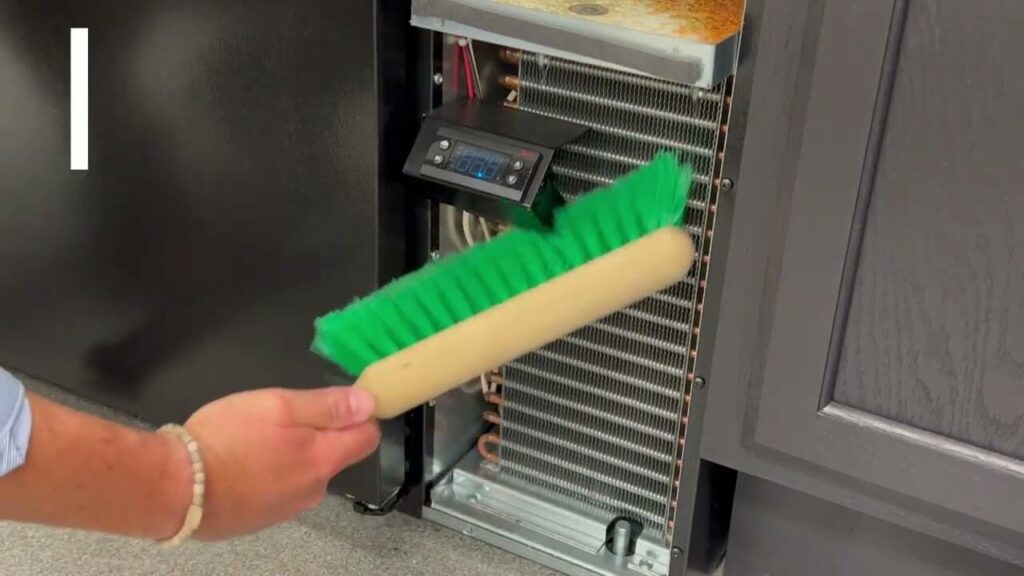
Checking The Fan Blades And Motor For Any Issues
Check for any issues with the fan blades and motor to solve the problem of a beverage air refrigerator not cooling. Properly maintaining these components ensures the efficient operation of the appliance.
Examining The Fan Blades For Obstructions Or Damage:
- Before jumping to conclusions about why your beverage air refrigerator is not cooling, it’s essential to begin diagnosing the issue by examining the fan blades for any obstructions or damage. Here’s what you need to do:
- Check for any debris, ice build-up, or other obstructions that might be impeding the fan’s rotation.
- If you notice any obstructions, carefully remove them to ensure smooth operation.
- Inspect the fan blades for any signs of damage or excessive wear and tear.
- Damaged blades can disrupt the airflow, affecting the cooling process.
Testing The Motor Function And Lubricating If Necessary:
- Once you’ve examined the fan blades and ensured they are in good condition, it’s time to move on to checking the motor function. Here’s how to proceed:
- Start by unplugging your beverage air refrigerator and locating the fan motor.
- Spin the fan blade with your hand to see if it rotates freely. If it feels stiff or doesn’t rotate smoothly, there may be an underlying issue.
- Check the wiring connections between the motor and power supply for any loose or disconnected wires.
- If necessary, consult your beverage air refrigerator’s manual for instructions on how to lubricate the motor.
- Proper lubrication can help optimize motor performance and ensure efficient cooling.
Remember, addressing these potential issues with the fan blades and motor is just the first step in troubleshooting your beverage air refrigerator’s cooling problem. If these steps don’t resolve the issue, it’s advised to consult a professional technician for further assistance.
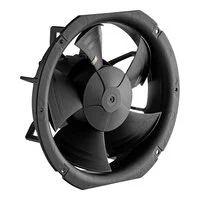
Ensuring The Evaporator Coils Are Clean And Frost-Free
Regular maintenance of the beverage air refrigerator includes ensuring that the evaporator coils are clean and free from frost buildup. This helps to prevent cooling issues and ensures optimal performance.
Cleaning The Evaporator Coils To Remove Any Ice Or Frost Buildup:
- Ensure the beverage air refrigerator is unplugged before cleaning the evaporator coils.
- Remove any items stored in the refrigerator to access the coils more easily.
- Gently remove any visible ice or frost buildup on the coils using a soft brush or cloth. Be careful not to damage the coils.
- If the ice or frost is stubborn, use a hairdryer on low heat to melt it away. Do not use sharp or hard objects to scrape the ice as this can cause damage.
- Once the ice or frost is removed, use a mixture of warm water and mild detergent to clean the coils thoroughly.
- Dip a clean cloth or sponge into the soapy water mixture and carefully wipe down the coils, removing any dirt or debris.
- Rinse the cloth or sponge with clean water and repeat the process to ensure all residue is removed.
- Allow the coils to dry completely before plugging the refrigerator back in and returning items to the refrigerator.
Checking For Proper Airflow Through The Coils:
- Visually inspect the area around the evaporator coils for any obstructions, such as boxes, food containers, or debris.
- Ensure there is sufficient space between the coils and the surrounding walls or items to allow for proper airflow.
- Clean any dirt or dust accumulated on the fan blades or vents of the refrigerator. This can be done using a soft brush or vacuum cleaner with a brush attachment.
- Check the refrigerator’s temperature settings to ensure they are set appropriately. Adjust as necessary.
- Verify that the condenser fan, located near the compressor, is running smoothly. If not, troubleshoot the fan or seek professional assistance.
- Regularly clean the condenser coils, which are located at the back or bottom of the refrigerator, to prevent dust buildup that can hinder cooling efficiency.
By following these steps to clean the evaporator coils and ensure proper airflow, you can help improve the cooling performance of your beverage air refrigerator. Remember to implement these maintenance practices periodically to keep your refrigerator functioning optimally.
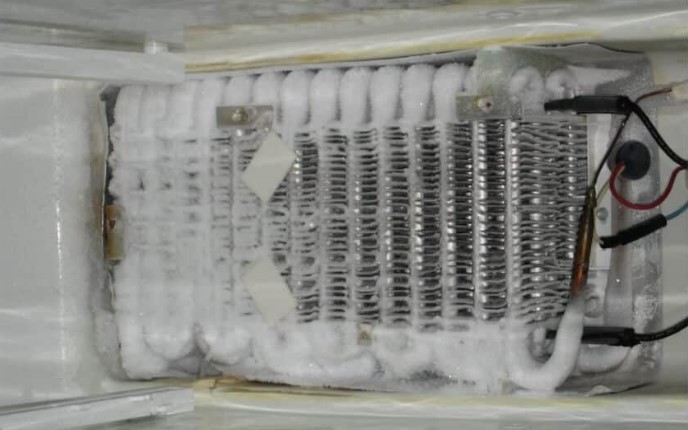
Inspecting The Door Gaskets For Leaks Or Gaps
Inspect the door gaskets of your beverage air refrigerator for leaks or gaps to troubleshoot cooling issues efficiently. Well-maintained gaskets ensure optimal performance and prevent any air leakage, allowing the refrigerator to cool effectively.
Checking For Signs Of Wear And Tear On The Door Seals:
Inspecting the door gaskets is an important step in troubleshooting a beverage air refrigerator that is not cooling properly. Door gaskets can develop leaks or gaps over time, compromising the refrigerator’s ability to maintain a cold temperature. Here are some signs of wear and tear to look out for:
- Cracked or torn gaskets: Check the door seals for any visible cracks or tears. These can allow warm air to seep into the refrigerator, causing it to lose its cooling capacity.
- Loose or damaged gaskets: Ensure that the gaskets are properly secured to the door. If they are loose or damaged, they may not create an airtight seal, resulting in cool air escaping and warm air entering the unit.
- Mold or mildew buildup: Inspect the gaskets for any signs of mold or mildew growth. Besides being unhygienic, mold or mildew can also compromise the integrity of the seals.
Regularly checking and maintaining the door gaskets is essential for ensuring that your beverage air refrigerator is operating at its optimal performance. If you notice any of these signs of wear and tear, it may be time to replace the door gaskets.
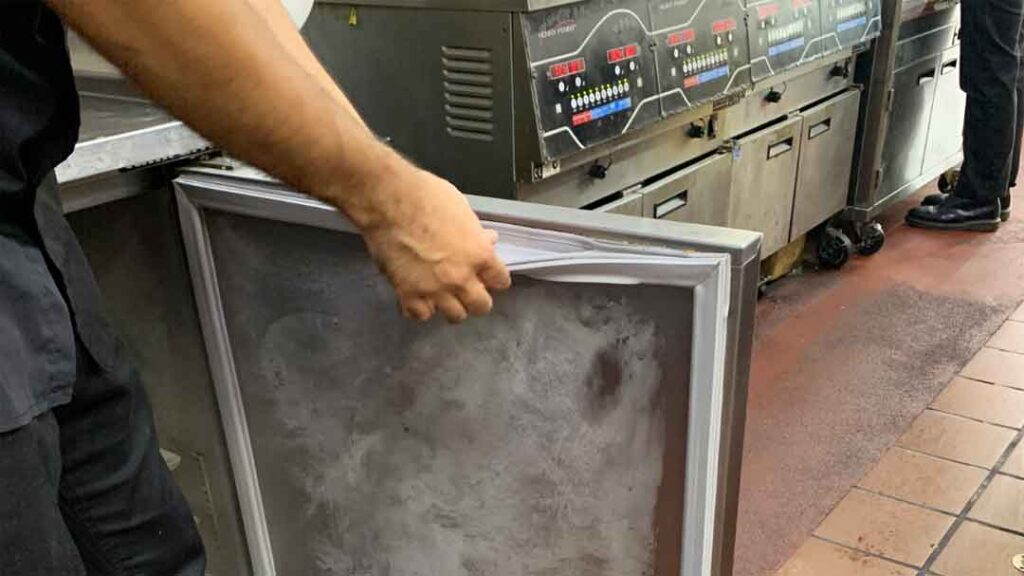
Testing The Seal Integrity Using The Dollar Bill Test:
To confirm the seal integrity of the door gaskets, you can perform a simple and effective test known as the dollar bill test. This test helps determine if the gaskets are forming a tight seal around the refrigerator door. Here’s how you can conduct the test:
- Open the refrigerator door and take a dollar bill or a piece of paper of similar size.
- Place the bill or paper partially inside the door, with half of it inside the refrigerator and the other half outside.
- Close the door and gently tug on the bill or paper. Feel for any resistance.
- Slowly pull the bill or paper out of the door. If you encounter any significant resistance or it comes out with difficulty, the seal is likely intact.
- Repeat this process in different spots along the door to ensure consistent results.
A strong seal should hold the bill or paper tightly, indicating that the gaskets are forming an airtight barrier. However, if the bill easily slips out or you encounter minimal resistance, it suggests that the door gasket may require adjustment or replacement.
Regularly checking the door gaskets for leaks or gaps and using the dollar bill test can help optimize the cooling efficiency of your beverage air refrigerator.
Verifying The Refrigerant Levels And Identifying Leaks
Verifying refrigerant levels and identifying leaks is crucial in troubleshooting a beverage air refrigerator that’s not cooling. Proper maintenance ensures optimal performance and prevents potential issues.
Verifying The Refrigerant Levels And Identifying Leaks
When your beverage air refrigerator is not cooling properly, it’s essential to examine the refrigerant levels and check for any leaks. In this section, we will guide you through the necessary steps to verify the refrigerant levels and identify potential leaks.
Inspecting The Refrigerant Lines For Any Visible Leaks:
To ensure that the refrigerant is not leaking from the system, follow these steps:
- Visually inspect the refrigerant lines for any signs of leakage, such as oil stains, corrosion, or frost accumulation.
- Look for any cracks, holes, or loose connections in the refrigerant lines.
- Check if there are any visible oil spots or stains around the compressor and condenser unit.
If you notice any of the above signs, it indicates a potential refrigerant leakage. In such cases, it is crucial to contact a professional for further inspection and repair.
Contacting A Professional For Refrigerant Leak Detection And Repair:
It’s always recommended to seek the assistance of a professional hvac technician when dealing with refrigerant leaks. They are trained to handle such situations safely and efficiently. Here’s what you need to do:
- Find a reputable hvac service provider or technician with expertise in refrigeration systems.
- Schedule an appointment for refrigerant leak detection and repair.
- Prioritize technicians who are certified and experienced in servicing beverage air refrigerators.
The professional technician will perform a comprehensive inspection to identify the exact location and cause of the refrigerant leak. They will then proceed with the necessary repairs, including fixing any damaged lines, replacing faulty components, and recharging the system with the appropriate amount of refrigerant.
Remember, refrigerant leaks can lead to reduced cooling performance and potential damage to your beverage air refrigerator. Therefore, it is crucial to take prompt action and rely on the expertise of a professional to address the issue effectively.
Don’t hesitate to reach out to an hvac specialist for refrigerant leak detection and repair to ensure your beverage air refrigerator maintains optimal cooling performance.
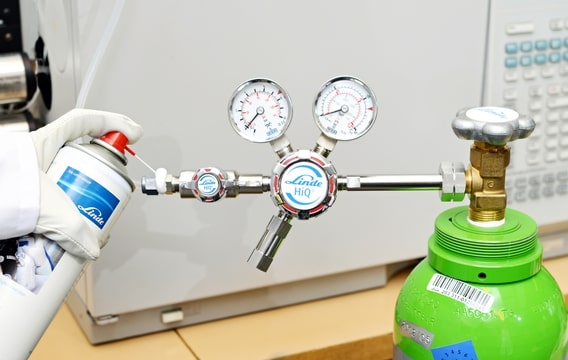
Identifying Compressor Issues And Potential Solutions
Having trouble with your beverage air refrigerator not cooling? If your compressor is not functioning properly, it can cause cooling issues. Try checking for any compressor issues and consider potential solutions to restore proper cooling.
Identifying Compressor Issues And Potential Solutions
When your beverage air refrigerator is not cooling properly, the compressor may be at fault. It’s essential to identify issues with the compressor and explore potential solutions to get your refrigerator up and running again. Here are some steps you can take:
Listening For Unusual Noises Coming From The Compressor:
- Turn off the refrigerator and unplug it from the power source.
- Place your ear close to the compressor and listen for any unusual noises such as rattling, buzzing, or grinding.
- If you hear any unusual sounds, it may indicate a problem with the compressor.
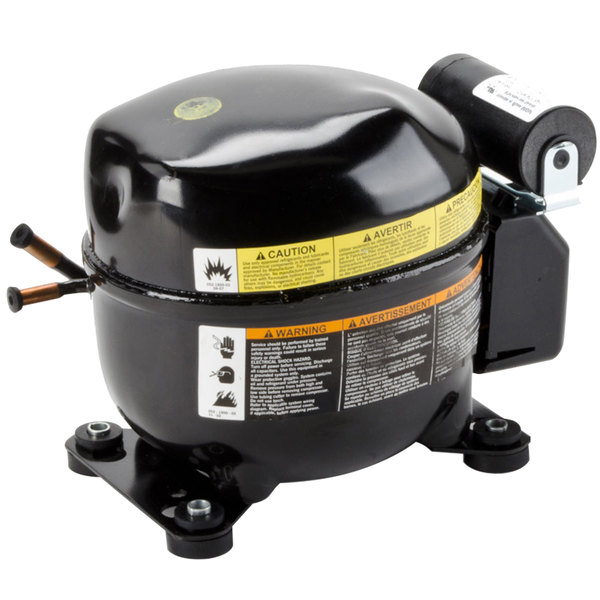
Testing The Compressor With A Multimeter For Proper Functioning:
- Before proceeding, ensure that you have the necessary safety equipment and knowledge to work with electrical components.
- Locate the terminals on the compressor and remove any coverings or protective panels.
- Set your multimeter to the resistance/ohms setting.
- Connect the multimeter probes to the terminals of the compressor, one to the start terminal and the other to the run terminal.
- The multimeter should display a resistance reading within the manufacturer’s specified range. If the reading is outside the range or shows no reading at all, it may indicate a faulty compressor.
These are just a couple of methods to help you identify compressor issues. Once you’ve determined that the compressor is indeed the cause of the cooling problem, it’s best to consult with a professional technician for further diagnosis and repair.
Remember, working with electrical components can be dangerous, so always prioritize safety and consider seeking professional assistance when needed.
Additional Maintenance Tips And Professional Assistance
Expert assistance and additional maintenance tips are available for beverage air refrigerators that are not cooling properly. Professional technicians can provide the necessary expertise to diagnose and resolve the issue, ensuring your refrigerator functions optimally.
Additional Maintenance Tips And Professional Assistance
When your beverage air refrigerator is not cooling properly, there are additional maintenance tips you can try before seeking professional assistance. Regularly cleaning and organizing the refrigerator interior is essential to ensure optimal cooling performance. In more complex situations, it may be necessary to consult a professional for further assistance or repairs.
Here are some helpful tips and guidelines to follow:
Regularly Cleaning And Organizing The Refrigerator Interior:
- Remove all items from the refrigerator and discard any expired or spoiled food.
- Wipe down the interior surfaces with a mild detergent or vinegar solution to remove any spills or stains.
- Pay special attention to the shelves, walls, and door gaskets, ensuring they are thoroughly cleaned.
- Use warm, soapy water to clean the shelves and drawers, removing any food residue or buildup.
- Allow all surfaces to dry completely before restocking the refrigerator.
- Properly organize the items in the refrigerator, ensuring there is adequate space for air circulation.
- Avoid overcrowding the refrigerator, as it can hinder proper airflow and cooling efficiency.
Regularly cleaning and organizing the refrigerator interior helps maintain optimal cooling and ensures that cool air circulates properly without obstructions.
Seeking Professional Help If The Issue Persists Or For Complex Repairs:
- If your beverage air refrigerator continues to have cooling issues after performing the basic maintenance steps, it may be time to consult a professional technician.
- A professional technician will have the expertise and tools necessary to diagnose and resolve complex cooling problems.
- They can inspect and troubleshoot the refrigerator to identify any underlying issues that may require repair or replacement of components.
- Professional assistance is especially recommended for more complex repairs that involve the compressor, condenser, or other critical components.
- Attempting complex repairs without the proper knowledge and skills can potentially damage the refrigerator further.
- Contact beverage air or a reputable appliance repair service to schedule a service call with a qualified technician.
By following these additional maintenance tips and seeking professional assistance when needed, you can ensure that your beverage air refrigerator remains in optimal condition, cooling efficiently and keeping your food fresh.
Frequently Asked Questions Of Beverage Air Refrigerator Not Cooling
Why Is My Beverage Air Refrigerator Not Cooling Properly?
There can be various reasons why your beverage air refrigerator is not cooling properly. It could be due to a malfunctioning compressor, a blocked condenser coil, or a refrigerant leak. It’s important to check these components, clean the condenser coil, and contact a professional technician if needed to identify and fix the issue.
How Can I Troubleshoot A Cooling Issue With My Beverage Air Refrigerator?
To troubleshoot a cooling issue with your beverage air refrigerator, start by checking the temperature settings and ensuring they are set correctly. Next, clean the condenser coil to remove any dust or debris that may be causing airflow restrictions. Additionally, inspect the door seal for any damage or gaps that could be causing warm air to enter the unit.
What Can I Do If My Beverage Air Refrigerator Is Not Cooling But The Fan Is Running?
If your beverage air refrigerator is not cooling but the fan is running, it may indicate a problem with the compressor or the thermostat. Check the compressor for any unusual noises or running hot. If the compressor seems to be malfunctioning, contact a professional technician to repair or replace it.
If the thermostat is faulty, it will need to be replaced.
Why Is My Beverage Air Refrigerator Running Constantly And Not Cooling?
If your beverage air refrigerator is running constantly but not cooling, it could be due to a few different issues. First, check the temperature setting and adjust if necessary. If that doesn’t solve the problem, check the condenser coil for dirt or blockages and clean if needed.
If the issue persists, it may indicate a faulty thermostat or a refrigerant leak, which would require professional assistance to diagnose and repair.
How Often Should I Clean The Condenser Coil In My Beverage Air Refrigerator?
It is recommended to clean the condenser coil in your beverage air refrigerator at least twice a year. However, if your unit is located in a dusty or humid environment, more frequent cleaning may be necessary. Regular cleaning of the condenser coil helps to maintain efficient cooling and prevent issues caused by dust or debris buildup.
Conclusion
If your beverage air refrigerator is not cooling, it can be frustrating and inconvenient. However, by following the troubleshooting steps mentioned in this blog post, you can diagnose and resolve the issue on your own. Start by checking the power supply and ensuring the refrigerator is properly plugged in.
Clean the condenser coils and check for any obstructions that may be blocking airflow. Adjust the temperature settings and make sure the unit is not overloaded with food items. If none of these solutions work, it may be necessary to call a professional technician to inspect and repair the refrigerator.
Taking proactive steps to maintain your beverage air refrigerator can help prevent cooling issues in the future. Remember to regularly clean and maintain the unit to ensure its optimal performance.
